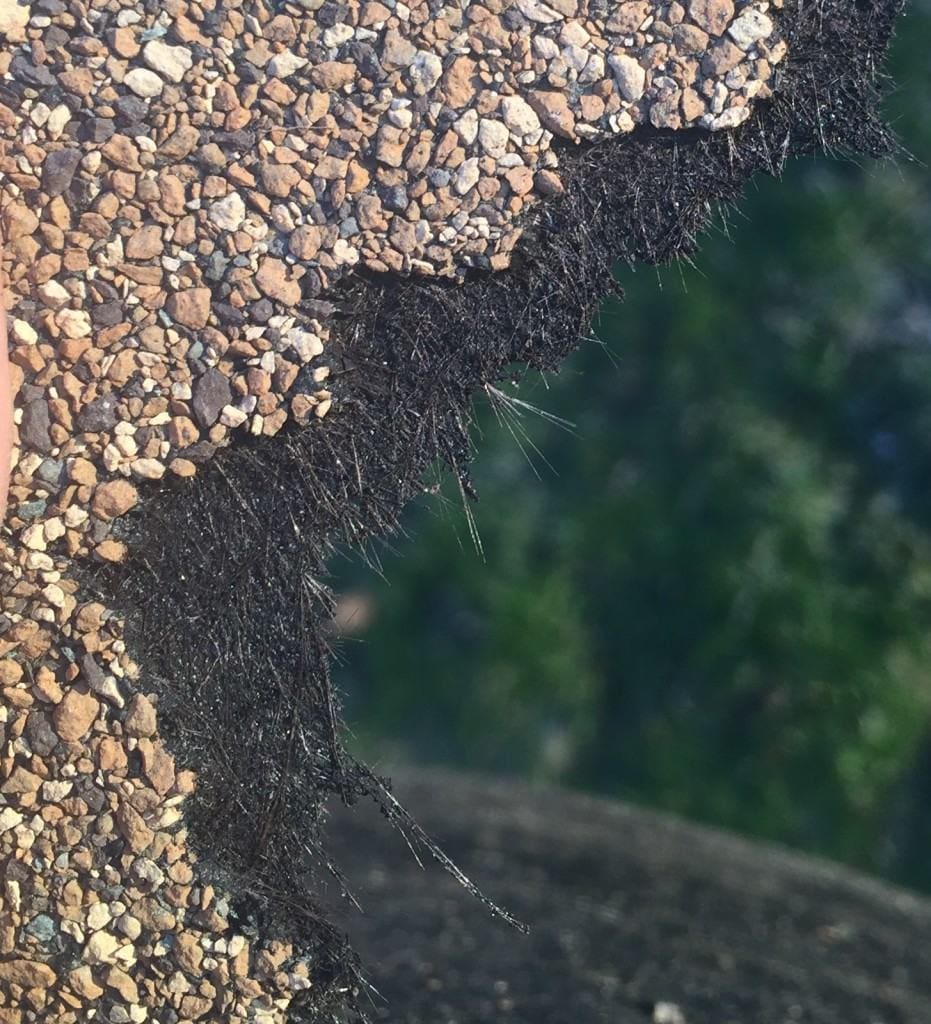If you’re not sure if you need a new roof, this may be the most important article you will read. To understand the wear patterns of a shingle you need to understand the 3 primary components of a shingle.
- Matting: The matting is the base of a shingle. Most of todays shingles are made with a fiberglass weave. It gives a shingle strength and is what the other components bind to.
- Asphalt: This is what keeps water out of your home. Asphalt is an oil-based product that repels water. Generally speaking, the more asphalt, the more water repellant properties of a shingle.
- Granules: Often people think they are just to make a shingle attractive. That is a huge mistake. The primary purpose of the granules is to protect the asphalt and keep it from drying out — ensuring that the asphalt can continue to protect your home.

If you look at your shingles closely and see something that looks like tiny white threads, that is exposed matting. That means that the granules have worn away and the asphalt has worn away, and all that is left in that area is the matting. It’s time to, at very least, start to think about replacing your roof if you see several areas with exposed matting.
This fiberglass weave usually shows up first on the bottom and side edges of shingles. Each shingle is overlapped so the shingle above each shingle, protects the one below. About half of a shingle is exposed to the elements (what you see) and half is covered by the next shingle up. This is why when you may see matting, a roof is not immediately leaking.
Over time, the asphalt, as well as the sealants that bind one shingle to the next, start to dry out. If you were to look at a shingle like that over time you would find that it has small fractures, that only continue to grow. Think of it like a dry creek bed, with the cracks that develop as the mud dries. The difference is that, unlike mud, those little cracks don’t fill in with the adjacent asphalt when it starts to rain.
Finally the granules — they are effectively ceramic, or stone based. Several manufacturers have started to incorporate copper sulfate into their granule mix. This copper sulfate leeches out of the granules over time, slowing down algae growth which many people mistakenly think of as mold on their roof. Eventually the copper sulfate wears out and there is virtually no more protection against algae streaking. But if you have streaking, don’t freak out. It’s not going to harm your roof. In extreme examples there can be organic debris or moss that can grow on a roof (usually on the north or in areas constantly shaded by trees) and moss can be problematic since it makes it so that there is constant moisture on your roof. That being said, some roofs have had moss on them for decades.

